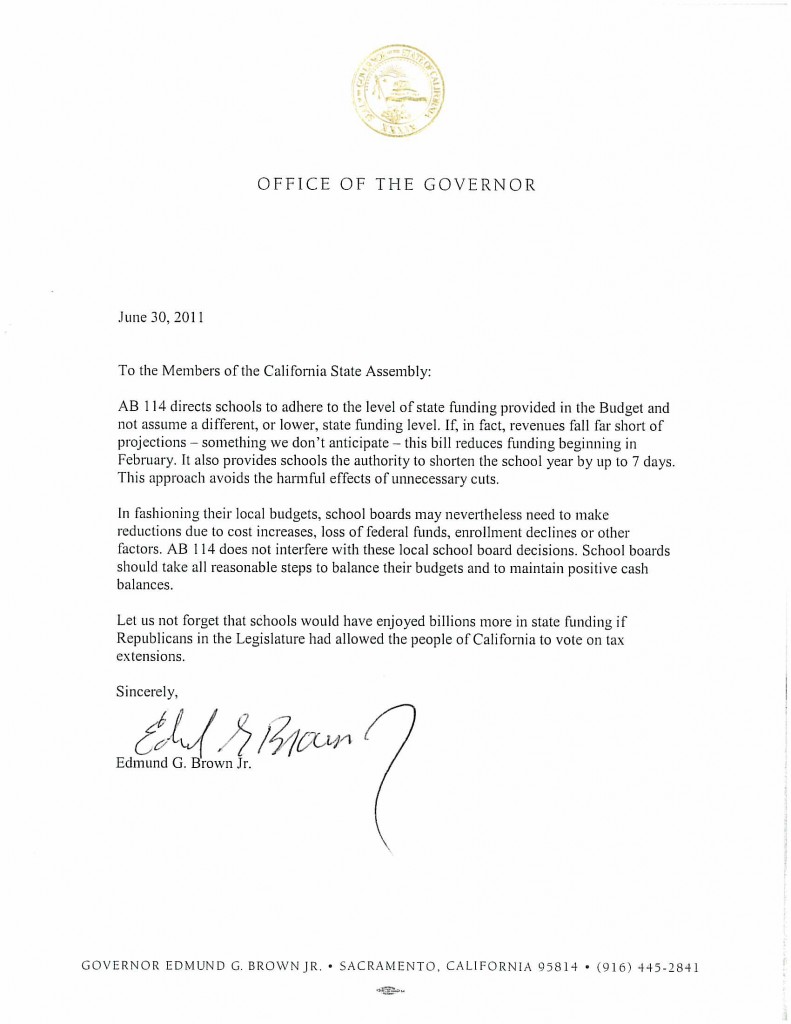On Thursday, June 30, the final day of fiscal year 2010-11, hours before the new fiscal year began, Gov. Jerry Brown signed the state budget for 2011-12.
The state General Fund spending totals $85.9 billion, 6.1 percent less than 2010-11.
Between June, when the Gov. vetoed the original 2011-12 budget approved by the state legislature, and this week, the Democratic majority found an additional $4 billion of projected revenues to balance the budget.
Local school districts, such as Hemet Unified School District (HUSD), awoke Wednesday morning to learn the budget legislation essentially eliminates their ability to control expenses for the next year.
The bill would require the” budgets of a … school district for the 2011–12 fiscal year to project the same level of revenue per unit of average daily attendance as it received in the 2010–11 fiscal year, and would delete the certification requirement regarding the 2 fiscal years subsequent to the 2011–12 fiscal year. “
Local school district must assume all state revenue will be received and can not taken prudent action until after January. That is when the Stat Finance Department will estimate whether the state coffers will actually be $4 billion greater.
If not, that says the districts must rebalance their budgets by the end of June 2012.
“That’s a 3-1/2-percent difference we have to absorb in six months. The equivalent of seven percent,” said HUSD Superintendent Dr. Steven Lowder, who was aghast at the legislature’s and the governor’s high risks decision.
“We’re compelled to book and spend this money, as though we’ve received,” Lowder said. “It makes no sense.”
The state suggests that the school year might be reduce seven days or transportation services might be cut mid-year if the additional revenues do not appear. “Do kids stay home?” Lowder asked.
The Governor’s signing message can be found below. Brown's letter signing education bill. While he urges districts to balance their budgets, the bill eliminates the requirement that county offices of education assess the financial capacity of local districts for two years beyond the current year.
Additional reductions were made in the state’s higher education programs. California State University (CSU) by at least $650 million and proposes an additional mid-year cut of $100 million if state revenue forecasts are not met.
As a result, during the Board of Trustees meeting on July 12, the CSU Chancellor Charles B. Reed plans to address the additional $150 million to $250 million reduction. In order to avert devastating and lasting damage to student access, student services and program quality, Chancellor Reed will recommend an additional tuition fee increase of 12 percent or $294 per semester effective for the fall 2011 term.












